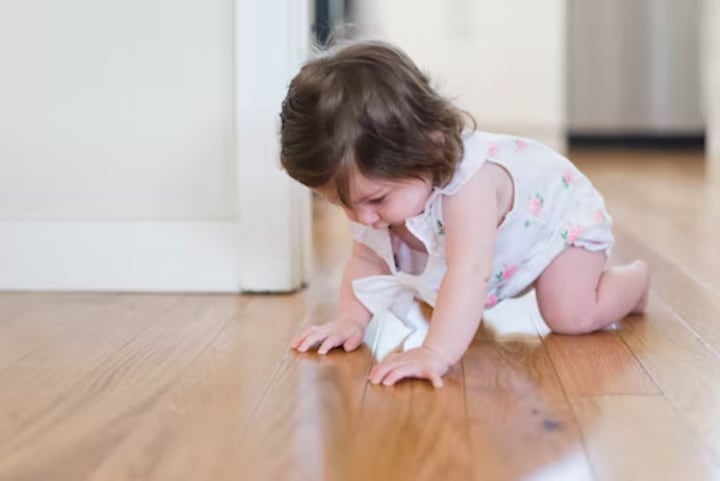Baby's intellectual development starts with crawling
Baby can not crawl responsibility in the parents

The experience of crawling has a great impact on the development of the baby's movements later in life, and some studies have concluded that the level of motor sensory development in infancy is closely related to the coordination of movements in adolescence.
The development of motor and spatial intelligence begins with crawling
Little chubby, almost 9 months old, often carried out by his mother to play. When she saw other babies crawling on the grass, her mother was envious of her because she could not crawl very well. A kind mother reminded her that she should give her little one this lesson as soon as possible because whether she can crawl or not and whether she has the experience of learning to crawl has a great impact on her baby's future motor development.
The crawling stage cannot be omitted
Body movement requires limb coordination, and crawling is the beginning of limb coordination. If you have observed your baby learning to crawl, you will find that his initial movement is to step back, learn to move his body backward, and then crawl forward with his hands and feet, which is a trial to move forward. In addition, the expansion of the activity space allows the baby to initially experience the feeling of omnipotence, which can greatly stimulate its interest in learning to crawl. Studies have shown that crawling helps babies' spatial perception, emotional alertness, sensibility, and initiative development, so crawling is not optional and cannot be omitted during the crawling stage. Some studies have concluded that the level of sensory development of the movement in infancy is closely related to the coordination of movement in adolescence.

Babies can't crawl The responsibility lies with parents
When it comes to whether babies can crawl, many young parents don't seem to pay much attention to it, at least not as much as they do to their babies learning to walk and talk. Some parents do not understand the importance of crawling, not to mention that traditional methods of baby care usually emphasize safety and protection. For example, babies start to learn to roll over at 3 months and can sit upright at 6 months, which is also a physical movement, but it is done in place and not dangerous because of the movement of the body and is easy to watch. But not crawling, crawling is the first step in the baby's free movement of the body, and the range of activities thus expanded a lot, in the parents' view, the danger and care of the difficulty are also much greater, so, often limit the baby crawl.
From crawling to upright learning to walk, about three or four months, it is easy to be replaced by sitting and playing, especially the temperament of quiet, inactive babies. Other parents think that will not crawl will not affect the baby to learn to walk, and walk on the line, crawling or not is not important. This concept is wrong.
Seize the baby crawling period
Babies are interested in crawling for a relatively short period (8 months old), so if you don't train them during the months when they are trying to crawl, it will be relatively difficult to train them deliberately later.
Suggestions for young parents.
-In the initial crawling stage, first, help your baby to get into a good position so that he or she can grasp favorite objects through the crawling action.
-Prepare a safe environment for your baby to crawl. Families that can spare an area can lay down a carpet or plastic puzzle board and deliberately let their baby crawl on it. When your baby learns to crawl, pay attention to placing some obstacles such as pillows and quilts next to the bed, or have an adult watch over them so that they don't fall and become dangerous.
-Baby sometimes crawls twice and then stops to pay attention to what is happening in other directions, so you should put the items that can attract their attention right in front of them.
Tip: If your baby is too timid to move forward, parents need not be anxious, they can do something to attract him or call his name in front of him, and he will continue to crawl forward.
Through intentional arrangement and repeated training, let your baby crawl twice a day to help your baby become familiar with the rules of alternating hand and foot movements and find a sense of balance in the body, plus the attraction of interesting toys, learning to crawl will become a game for your baby to get pleasure.
About the Creator
Harry Bird
The most important decision in life is not what you do, but what you don't do
Enjoyed the story? Support the Creator.
Subscribe for free to receive all their stories in your feed. You could also pledge your support or give them a one-off tip, letting them know you appreciate their work.






Comments
There are no comments for this story
Be the first to respond and start the conversation.